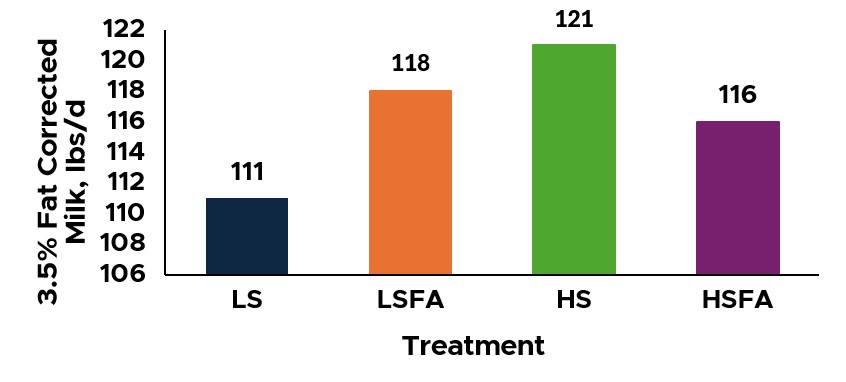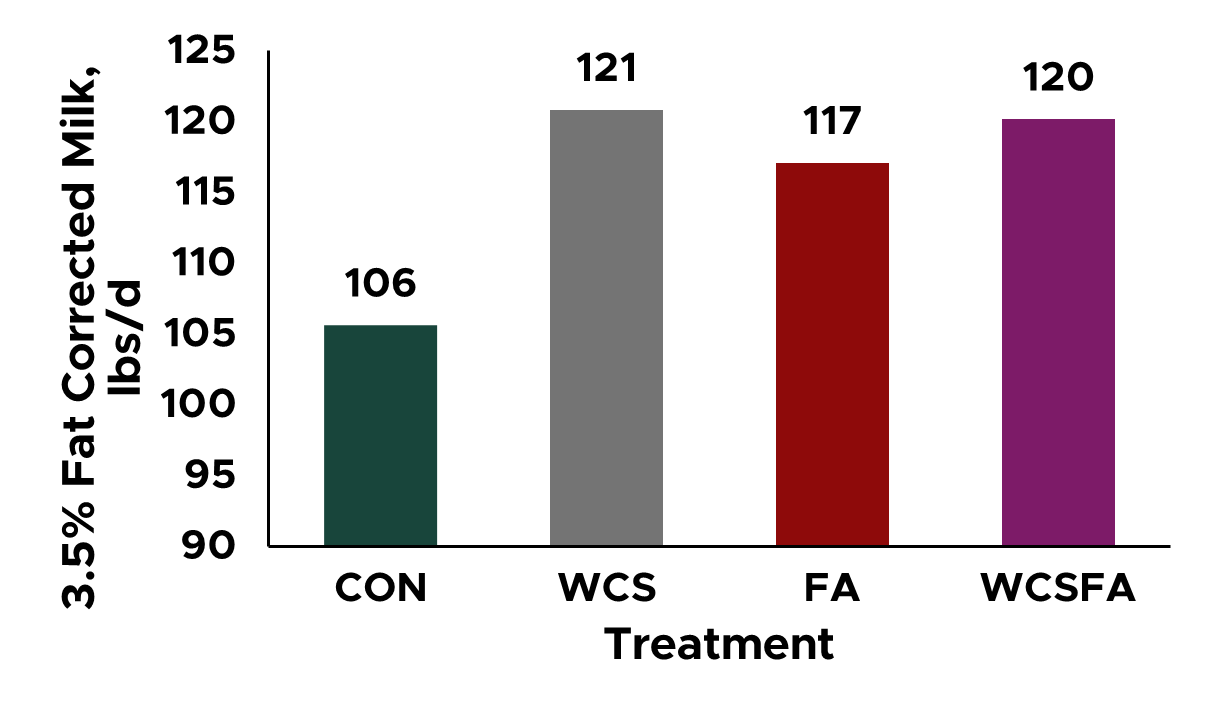In this study, we fed four diets to early lactation cows and compared both milk fat in pounds per day and 3.5% fat corrected milk in pounds per day.
Low starch (LS): 22% diet dry matter (DM) was starch
Low starch with FA (LSFA): 22% diet DM was starch, 2% of diet DM was a 70% PA and 20% OA supplement
High starch (HS): 28% of diet DM was starch
High starch with FA (HSFA): 28% of diet DM was starch, 2% of diet DM was a 70% PA and 20% OA supplement
Adding fatty acids to a low starch diet increased milk fat and 3.5% fat-corrected milk yield. Fatty acid supplementation did not increase these variables when combined with a high starch diet. Combining high starch and a FA supplement may negatively impact ruminal fermentation, reducing available nutrients for milk fat synthesis and increasing rumen production of specific fatty acids known to reduce milk fat synthesis in the mammary gland. Check the diet’s starch content before supplementing with fatty acids to early-lactation cows.

Fatty acid supplementation from whole cotton seeds or supplemental fat
In this study, we again fed four diets to early lactation cows but used different treatments. We compared a control treatment to a diet with supplemental whole cotton seeds, supplemental fatty acids, or both together.
Control (CON): A diet without WCS or supplemental FA
Whole cotton seed (WCS): 10% of diet DM was WCS
Fatty acids (FA): 1.5% of diet DM was a 60% PA and 30% OA supplement
WCS with FA (WCSFA): 10% of diet DM was WCS and 1.5% of diet DM was a 60% PA and 30% OA supplement
Adding WCS or FA to the diet increased milk fat and 3.5% fat-corrected milk yield compared to the control diet. However, feeding both resulted in a large increase in dietary FA, which may have negatively impacted nutrient digestibility, resulting in no further improvement compared to feeding them individually. Feeding WCS or FA is a good strategy to improve animal performance in early-lactation cows.

Source : msu.edu